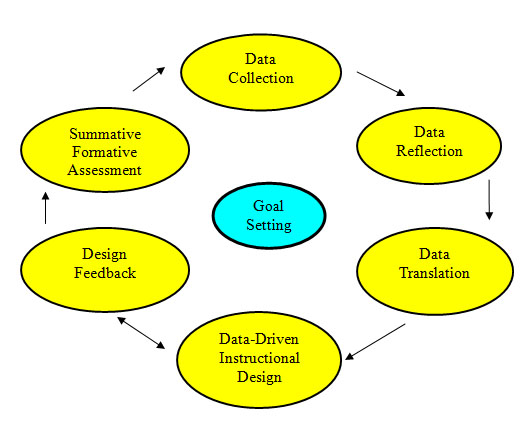
|
||||||||||||||||||||||||
|
|
Meeting the Needs of All Learners Through Data |
|||||||||||||||||||||||
|
|
|
|
DDIS System Blink/Halverson Model for Data Driven Instructional Systems (2005)  Model Components and Definitions Data Collection - Organizing how data are acquired and stored in a school district. Data Reflection - Providing opportunities for teachers, administrators and other school district stakeholders to analyze and interpret data for school improvement. Data Translation - Converting the district data into content, curricular and program revision. Data-Driven Instruction Design - Moving data to the classroom level so it is utilized by teachers to improve instruction in their classrooms. Design Feedback - Evaluating how information is shared with the multiple stakeholders in a district including students, parents, teachers, administrators, school board members and the community. Summative/Formative Assessment - Measuring the implementation of data-driven initiative through multiple means of assessment, to monitor progress. Goal Setting - Keeping the focus of all school improvement efforts and knowing that goals can change as a district moves through the DDIS Model. |
|||||||||||||||||||||
|
|
||||||||||||||||||||||||